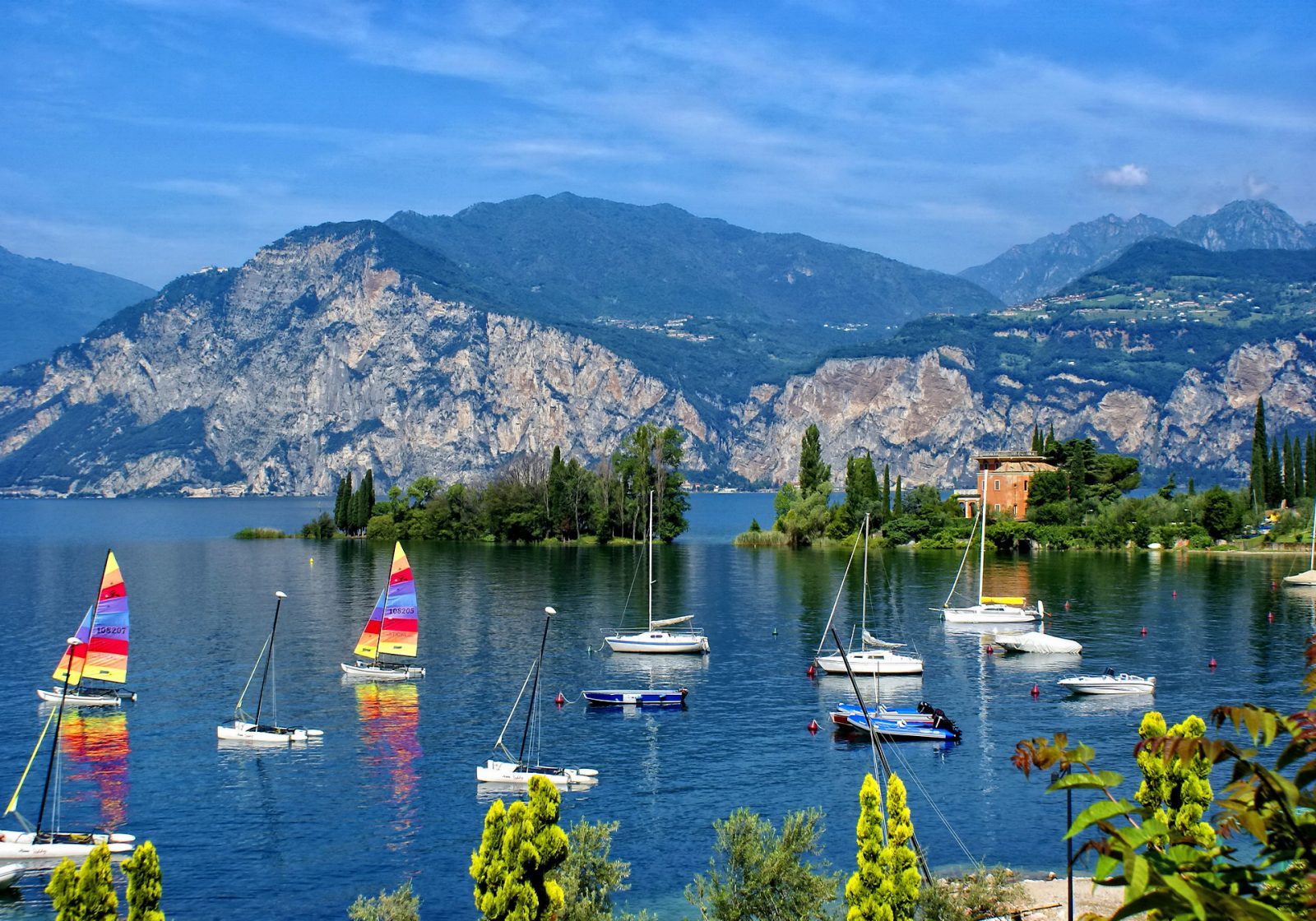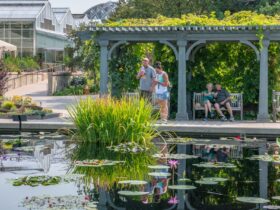“Como! thou, a treasure whom the earth
Keeps to herself, confined as in a depth
Of Abyssinian privacy.”
-William Wordsworth
Lake Como being the third-largest lake in Italy also has a well-known reputation for being a retreat for aristocrats and the wealthy since Roman times. Today it still hold its place as being a playground where the glamorous gather to enjoy one of the most beautiful lakes in Europe softly hidden by the snow glazed Rhaetian Alps. The southwest tip of the city of Como has been bourgeoning as a hotspot of visitors for all bank of all social classes making it an interesting and exciting mix.
The weather in Lake Como is stable maintaining generally mild temperatures. The climate is Mediterranean-like with sub-tropical plants that grow year round. Winter presents a higher temperature. This can range from 36 °F in January to 86 °F in July. The snowfall is unpredictable but usually effects the higher elevations. Rainfall on the area is primarily the most substantial in May and least likely in the winter season.
Overall as a tourist attraction and destination Lake Como is popular for its richness in culture, history, good weather, landscapes, wildlife, spectacular views, and spas. The settings and offerings include sailing, sites perfect for windsurfing and kitesurfing.
Perchy Bysshee Shelley who was one the major English Romantic poets wrote to his close friend Thomas Love Peacock who was an English novelists, poet that “This Lake exceeds anything I ever beheld in beauty, with the exception of the arbutus islands of Killarney. It is long and narrow, and has the appearance of a mighty river winding among the mountains and forests.”
“No sound of wheels or hoof-beat breaks
The silence of the summer day,
As by the loveliest of all lakes”
-Henry Wadsworth Longfellow
The lake is popular for its eye-catching and gorgeous lakeside villas that were built here since Roman times. Many of these villas on the shores have marvelous gardens from the mild climate that are prone to bursts of tropical plants and exotic wildflowers.
“The sun. It’ll be sunny in Tremezzo.”
-Grand Hotel (1932) with Greta Garbo
Tremezzo is one of the most popular spots tourist go to that stands sedately on the western shore of Lombardy that is right across and in front of Bellagio and Lezzeno. It was one of favorite places of Konrad Adenauer who was a highly regarded German statesman.
Since 1947, the village of Tremezzo along with Lenno and Messegra have become part of an exclusive and distinctive community known as Tremezzina. These awe-inspiring villas contain some of the biggest hotels built from the XVIII to the XIX century. The best hotel in lake como, my favorite, is here: Grand Hotel Tremezzo.
There is an area of Rogaro in Tremezzo where an ancient tower can be found remaining from old medieval times of fortresses. Tremezzo is split in personality which many can enjoy for its interesting and variety of landscapes. One part coastal breeze and ease and the other mountainous terrain. Some of the most interesting places include the villa Carlotta. Other sites to look out for are the Villa La Quiete which is located in Bolivedro and was built by the Dukes of Carretto in XVIII. There is also the Villa La Carlia, a building build in the middle of 1700 designed by Antonio De Carli. For a more spiritual connection there is the lovely Church of St Maria known for its exquisite statue of Madonna Nera.
The Villa Carlotta is perched on a charming hillside in the Upper Peter bay making an elegant sanctuary for anyone to indulge in. It’s full on all the comfort a fantasy that is considered by many to be rare beauty. Here works of floral arts and masterpieces in human intellect and creativity come together to create the Villa Carlotta. Full of exquisite gardens and museums it’s sure to bring the idealist in a person. The residence was commissioned at the end of XVII century by Giorgio Clerici. It’s a sedate but arresting building surrounded by classically Italian styled botanical gardens and statues, and topped off with graceful fountains.
Later the owner a nobleman named Gian Battista Sommariva wanted to improve on its beauty. He added great works of art using his skill as an art collector and entrepreneurship to acquire the masterpieces that would set the villa apart as the temple of XIX century art. Using his skills and his vision he transformed it into Romantic Park drenched in history, arts, intellect, and natural beauty. Some of the artworks include Love and Psyche, Palamedes, Tersicora, The last kiss of Juliet and Romeo, and Antonio Canova.
The name of the villa comes from Princess Marianna di Nassau giving the property to her daughter Carlotta as a wedding gift for her marriage to Giorgio II Duchy of Sachsen-Meiningen.
In the western part of Lake Como sits the village of Lenno. It’s a fortunately private villa bursting and encircled by flourishing flora and continually washed by gentle relaxing waters. Because of this it is one of less crowded villas and is known to be special place to read, study, think, and share with friends. Especially the Villa del Balbianello which is in Lenno. It’s famous for its gardens and for being the destination used to shoot the film Star War’s Episode II – Attack of the Clones (2002). Other feature films that used it beautiful setting for shoots included A Month by the Lake (1995) and Casino Royale (2006)
The Villa del Balbianello overlooks Lake Como with regal grace. It’s known for its extravagant and decorative terraced gardens. This villa was built in 1787 for Cardinal Angelo Maria Durini on a Franciscan monastery. It wasn’t until the explorer Guido Monzino who was the leader behind the first Italian expedition to climb Mount Everest, that the villa became filled with a rich collection of artifacts that he found on his travels. After his deceased in 1988, the villa was given to Fondo per l’Ambiente Italiano who was the National Trust of Italy. Today this villa is part of the Grandi Giardini Italiani which is an association that encompasses all the major gardens in Italy.
























